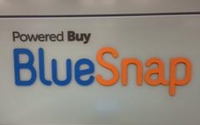Commentary
Payment Conversion in the World of Mobile Commerce
- by Chuck Martin , Staff Writer, December 17, 2013
 Throughout the mobile path to purchase, there are multiple times and
ways that the consumer purchase decision can be influenced.
Throughout the mobile path to purchase, there are multiple times and
ways that the consumer purchase decision can be influenced.
As I’ve written about here in the past (The Mobile Shopping Life Cycle), there are six stages in the mobile purchase path, one of which is the actual transaction, where money changes hands.
One might think that during that phase of the cycle, the decision is made and nothing can be done to alter the outcome.
However, there’s a little seen and often overlooked issue of payment abandonment rate.
Merchants frequently lament when consumers bail on the purchase, commonly known as shopping cart abandonment rate. This, of course, is when a mobile shopper moves an item into a digital shopping cart but ultimately doesn’s make the buy.
This abandonment rate can range anywhere from 50 to 90 percent and many retailers spend a lot of effort working to decrease that stat.
But a less visible issue merchants face during the transaction is the payment abandonment rate. This is when the payment completion never occurs, for a host of reasons.
At the recent Money2020 conference in Las Vegas I came across BlueSnap, a company whose entire global focus is on increasing payment conversion.
More recently, I dropped into the company’s new headquarters in Waltham, just outside of Boston, to further discuss the issue with BlueSnap CEO Ralph Dangelmaier.
“There is still sometimes 20 to 40 percent abandonment rate on payments and we have a way to reduce that significantly,” says Dangelmaier.
BlueSnap essentially provides a payment gateway for merchants and targets companies in the $1 million to $50 million revenue range, though its customers include some larger companies including Autodesk and Symantec.
The key for BlueSnap is its global approach and reach. It has more than 5,000 merchants, shoppers in 180 countries, with 28 languages, 60 currencies and 110 payment types.
BlueSnap converts and localizes the transaction on the fly based on the market.
“We make things local; local language, local payment type and local currency, so you’re entering something in your native language,” says Dangelmaier. “For us, the more complicated the better, since we take all the payment types.”
“You can have a different cash machine or checkout in every country in a different language,” he says. “The merchants don’t know what payment method to offer in each country. If you’re in Germany, you would get options for direct debit, local payment types and then cards. If you’re in the U.S., you’d get just get the U.S. cards and PayPal.”
BlueSnap serves up the mobile page for the customer, they click send, it goes to the cloud, the payment is processed and comes back, all encrypted and in real time.
What strikes me as an advantage for the company is its global DNA, in line with the ever-growing globalization of mobile commerce.
Dangelmaier says about 40% of its merchant business is in the U.S. with 60% in rest of the world.
“Europe is getting more of a pick up right now because they’re leading the online sales,” he says. “It’s more expensive and they don’t have malls, so they’re getting much more comfortable buying online. So they’re probably leading the charge. But North America is still one of the best consumers in the world. They buy.”
One of the goals of the payment company is to facilitate the global expansion of local companies. “Smaller companies don’t yet get that they can be global,” says Dangelmaier.
Though the company is hardly a household name, it has been establishing itself in the payment space for some time. Its base of credit card information also allows the platform to make one-click mobile purchasing much easier for repeat customers.
“We have 10 million cards we’ve been storing over 10 years,” says Dangelmaier. “All payment info is saved, so consumers can buy more easily next time in. It just depends on the merchant.”
The key for increasing payment conversion is to increase the ease of the actual mobile payment transaction, in many cases by highly localizing the transaction and providing instant alternative payment types.
“If you have 100 transaction and 80 of them go through and then if you give them to our system 88 would go through, that’s 8 more transactions per 100 than before,” says Dangelmaier. “Merchants don’t know and nobody knows to ask. They’re asking is the cost 2.7% or a 2.9% fee. This is the most unspoken about thing in the payments world.”
Payment conversion is now part of the world of mobile commerce.



